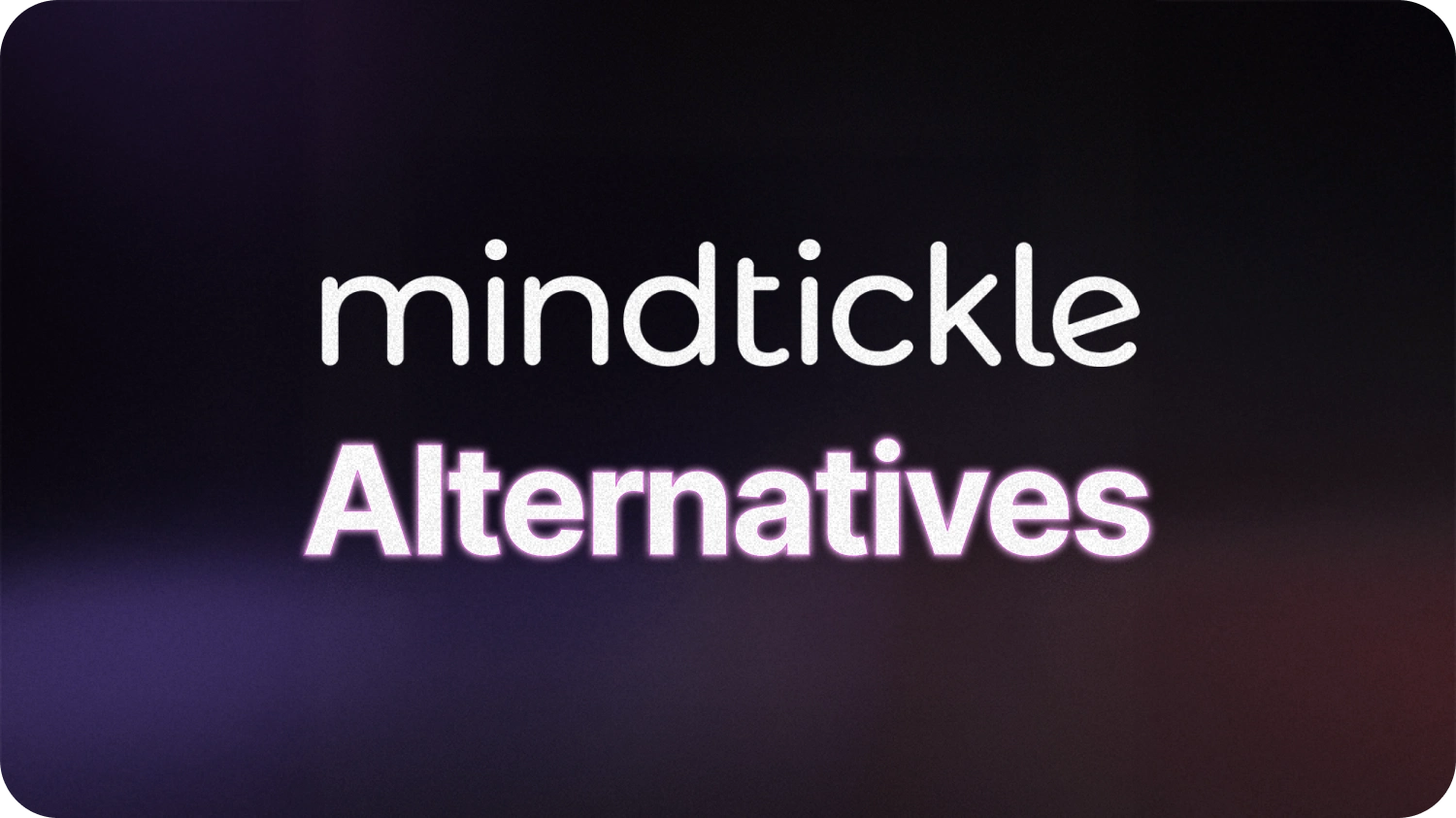In high-stakes professions like aviation or medicine, practice is not optional. Pilots log hours in simulators and surgeons rehearse before operating. Yet in sales, many reps still “wing it” on live calls without enough preparation.
Traditional roleplaying exercises are often awkward, inconsistent, or skipped altogether. Reps rehearse only when real prospects are watching, which is a risky approach that stalls deals and flattens performance.
This is where AI-powered sales role play comes in. Think of it as a flight simulator for sales: an always-on, judgment-free training environment where reps can practice real-world selling scenarios, build muscle memory, and sharpen their skills - all without putting real revenue at risk.
In this guide, we will explain what AI sales roleplay is, why it is transforming training, and how to implement it through best practices and a clear checklist.
What Is AI Sales Role play and Why It Matters
AI sales roleplay lets reps engage with an AI persona that acts as the buyer. Unlike traditional peer-to-peer roleplays, this AI responds dynamically by asking questions, raising objections, and adjusting in real time based on the rep’s input.
This results in realistic, flexible training for cold calls, discovery meetings, and high-stakes negotiations. It addresses the common issues of traditional roleplays:
- Judgment-free environment: Reps can practice privately without fear of embarrassment. Mistakes become learning opportunities, not deal-breakers.
- Flexible scheduling: AI is always available. There is no need to wait for a training day or manager availability.
- Lifelike buyer behavior: AI simulates how real prospects push back, pause, or dig deeper.
- Objective feedback: Reps receive consistent, data-backed coaching on key areas like talk time and objection handling.
- Faster ramp-up: New hires onboard faster and experienced reps maintain peak performance through continuous practice.
In essence, AI roleplay brings consistent, realistic, and cost-effective training to your team. Reps get a safe sandbox to hone their skills, so that when it’s showtime with a real buyer, they’ve already handled similar objections and scenarios in practice. As one sales leader put it, you’d never let an athlete skip practice and then expect a championship performance – sales calls shouldn’t be any different
Why Traditional Role Plays Fall Short (and How AI Fixes It)
Before diving into best practices, it’s important to understand where traditional role-playing fails, so you can avoid those pitfalls. Classic sales role-plays – two people in a conference room acting out a script – have good intentions but often fall flat in execution:
1. Forced and Unnatural
Many reps find in-person roleplays stiff or performative. The presence of peers can create anxiety, limiting honesty and growth.
AI solution: Practicing alone with an AI removes social pressure. Reps feel safe to experiment and learn authentically.
2. Inconsistent Feedback
Feedback varies depending on who is giving it. Some managers focus on tone, others on content. Peers may offer little more than “sounded good.”
AI solution: AI provides structured, repeatable feedback every time. Metrics are consistent and specific, guiding reps toward tangible improvements.
3. Time Constraints
Live roleplays require coordination and often get pushed aside due to packed schedules.
AI solution: Reps can practice anytime. Managers can review session summaries when it suits them, which makes coaching more efficient.
4. Low Realism
Roleplaying with coworkers often lacks the pressure and unpredictability of a real sales call.
AI solution: AI uses real sales call data to replicate real-life objections, emotions, and conversation dynamics. Reps learn to think and respond in the moment, just like in live conversations.
In summary, traditional role-playing often falls short due to human limitations – time, bias, discomfort, and inconsistency. AI roleplay addresses these shortcomings by providing authentic, adaptive simulations with objective coaching feedback, available whenever reps need it. It turns role-playing from a clumsy one-off exercise into a powerful ongoing training tool. As we next discuss the best practices for AI roleplay, you’ll see how to fully leverage these advantages.
Key Features of Effective AI Sales Role play
Not all AI roleplay tools are created equal. To truly “master” sales training with AI, you’ll want to leverage certain key features and capabilities. Below are the critical elements that make an AI sales roleplay effective – consider this a checklist of what best-in-class AI roleplay entails:
1. Realistic Voice and Persona Simulation
The AI should sound human, using natural tone, emotion, and pauses. This realism encourages reps to take practice seriously.
MeetRecord, for example, trains its AI on real B2B sales calls, so buyer simulations reflect actual decision-makers’ tone, language, and objections.
2. Scenario Relevance from CRM Data
Effective roleplays mirror real sales opportunities. The best tools integrate with your CRM to surface scenarios from live deals, including common objections and deal stages.
With MeetRecord, you can simulate buyer personas from your actual deal pipeline contacts from your CRM making your reps ready to face real-life sales scenearios.
3. Custom Buyer Personas
Training should prepare reps for all types of buyers. Choose tools that let you define personas based on roles, industries, and personalities.
You can create profiles like "Busy CFO" or "Skeptical Technical Lead," then set their behavior, tone, and communication style.
4. Immediate, Data-Driven Feedback
AI should provide detailed feedback after each session, including:
- Talk-to-listen ratio
- Filler word usage
- Clarity in handling objections
- Confidence and tone
- Scores based on your methodology (SPIN, MEDDIC, BANT, etc.)
5. Progress Tracking and Analytics
Ongoing improvement is key. Choose a tool with dashboards or reports that show each rep’s history, scores, and growth over time. Some platforms, like MeetRecord, even correlate practice habits with quota performance.
By ensuring your AI roleplay program has realistic voices, relevant scenarios, diverse personas, immediate feedback, and trackable results, you create a rich environment for reps to learn by doing. Next, we’ll outline how to implement such a program step by step. Keep these features in mind as you roll it out or evaluate solutions (for instance, MeetRecord’s platform checks all these boxes by combining AI roleplay with conversation intelligence and CRM integration – more on that later).
Best Practices to Implement AI Roleplay in Sales Training (Step-by-Step)
Introducing AI roleplay to your sales organization doesn’t require a complete training overhaul, but it does need a thoughtful approach. Here are the best practices to successfully integrate AI simulations into your sales training, ensuring you get buy-in and real results:
1. Focus on Critical Scenarios First
Start small. Choose the 2 or 3 most important challenges your team faces, such as pricing objections or ghosted follow-ups.
2. Pilot with a Small Group
Test the tool with 5 to 7 reps before scaling. Gather their feedback on usability, voice quality, scenario accuracy, and learning value.
3. Make Practice Routine
Set aside 15 to 20 minutes two or three times a week for roleplay drills. Add this to team calendars or daily standups to build consistency.
4. Blend AI with Human Coaching
Let the AI handle repetition and feedback. Managers should review session summaries and meet with reps to offer deeper insights.
5. Monitor and Optimize
Track usage and outcomes. Adjust your sales roleplay scenarios, persona settings, or coaching cadence based on what is working.
By following these best practices by focusing on big-win sales scenarios, piloting, building a practice habit, blending human touch, and measuring impact, you’ll integrate AI roleplays in a way that your team actually embraces. The result will be more prepared reps who feel ready for anything the market throws at them.
Connecting Roleplay with Reality: The Bigger Picture of Revenue Intelligence
To truly master sales training with AI roleplays, consider how it fits into your overall sales enablement and revenue intelligence strategy. The most value comes when roleplay practice isn’t an isolated activity, but rather part of a connected ecosystem of tools and insights that drive sales performance. Here are a few ways to contextualize AI roleplay within the bigger picture (and how platforms like MeetRecord approach it):
1. Build Roleplays from Call Insights
Use conversation intelligence tools to find common objections or missteps, then create practice sessions around them.
2. Automate Through CRM Integration
AI roleplay becomes smarter when it responds to CRM triggers. For example, if a deal moves to negotiation, the system can suggest a relevant practice scenario.
3. Leverage Buyer Intelligence
If certain buyer types or messages stall deals, simulate them. For example, replicate skeptical tech leads if they are often blockers.
4. Unify Coaching and Sales Performance
Combine call scoring, roleplay feedback, and deal analytics in one view. Platforms like MeetRecord offer this visibility to make coaching timely and impactful.
In summary, think of AI sales roleplay not as a stand-alone gadget, but as a vital component of a holistic sales excellence program. The best results come when you connect practice to the real sales motion – through data, integration, and insight. Platforms like MeetRecord are leading this charge by embedding AI roleplay into their revenue intelligence ecosystem, combining it with conversation intelligence, deal analytics, CRM automation and more to drive “smarter selling from day one”
Even if you use separate tools, strive to link them: use your call recordings to design roleplays, use roleplay outcomes to trigger coaching, and tie both to your CRM. This way, every practice session directly supports your sales objectives, and every bit of sales data feeds back into better training. That is truly mastering sales training with AI – when practice and performance become one continuous, virtuous cycle.
AI Sales Role Play Implementation Checklist
To wrap up, here’s a concise checklist you can use to ensure you’re covering all bases when implementing AI roleplay for sales training. Use this as a quick reference to evaluate your strategy or to guide discussions with your team and vendors:
- Define high-impact sales scenarios first: Identify the top 2–3 moments where deals tend to stall, such as handling pricing objections, responding to competitor mentions, or re-engaging after no-show demos. Focusing here ensures early wins and builds team confidence.
- Base roleplays on real sales data: Don’t invent scenarios from scratch. Use loss reasons from your CRM, objection trends from your call transcripts, and team feedback to make every roleplay session grounded in reality.
- Create realistic and diverse buyer personas: Simulate different decision-makers your team typically encounters, from skeptical CTOs to budget-conscious CFOs. Vary their tone, attitude, and objectives so reps learn to adapt their communication styles accordingly.
- Choose tools with lifelike AI voices and natural dialogue: To make practice immersive, your AI must sound and respond like a real person. Look for tools that support different accents, emotional tones, and conversation styles.
- Deliver immediate, data-driven feedback after every session: Feedback should go beyond “good job.” Ensure your platform scores reps on key behaviors liketalk-to-listen ratio, objection handling, use of filler words, tone, and question clarity, with clear tips for improvement.
- Track rep progress over time: Use dashboards to log each rep’s roleplay frequency, skill improvements, and coaching history. This allows managers to personalize support and recognize growth milestones.
- Start with a small pilot group: Test the platform with a handful of reps across different experience levels. Collect feedback on usability, relevance of scenarios, and perceived impact, then optimize before scaling company-wide.
- Integrate roleplay into the team’s weekly rhythm: Consistency matters more than intensity. Block 15–20 minutes twice a week on calendars for “roleplay gym time.” Reps are more likely to stick with practice when it’s lightweight and routine.
- Encourage collaboration with human coaching: AI handles repetition, but human insight is still essential. Managers should review AI feedback, coach around blind spots, and connect simulated scenarios to live deal contexts.
- Align roleplays with live sales stages and buyer types: Use your CRM to trigger roleplays based on deal stage. For example, if an opp is nearing close, reps should rehearse pricing conversations with a CFO persona. This makes practice timely and highly relevant.
- Connect your roleplay tool to your revenue intelligence stack: For best results, your AI roleplay solution should work alongside call recording, deal analytics, and coaching workflows. This creates a feedback loop between training, real performance, and coaching focus areas.
Why MeetRecord Is Built for Sales Teams Who Want to Win?
MeetRecord brings AI roleplay, CRM integration, conversation intelligence, and performance coaching together in one platform.
You can simulate realistic sales scenarios, coach based on live deal context, and measure readiness across both practice and real calls. MeetRecord helps reps rehearse the exact conversations that drive outcomes. It gives managers the visibility to coach effectively and helps enablement leaders connect training to revenue.
Sales is no longer an arena where only natural talent wins – deliberate practice and data-driven coaching are the new keys to excellence. AI roleplay provides a scalable way to make practice a pillar of your sales culture, turning theoretical knowledge into applied skills. When reps can drill with lifelike AI “prospects”, get instant feedback, and repeat until perfect, they show up to real buyer meetings sharp, confident, and prepared for anything. And when that practice is connected to real-world data and broader revenue intelligence, it ensures every training effort drives actual sales results.
In the age of AI, the best sales teams will be those that embrace these tools to train smarter and faster than the competition. So equip your reps with an AI roleplay “sparring partner” and watch the transformation – from hesitant pitches to polished value conversations, from lost deals to closed-won. As you implement the best practices and checklist above, you’ll be well on your way to mastering sales training with AI roleplays – and seeing the impact where it counts, on the bottom line.
( Remember: Just like a top athlete uses technology and coaching to gain an edge, a top sales rep in 2025 does the same. Practice isn’t optional – but now, with AI, it can be engaging, personalized, and ultra-effective. Happy selling! )
To get started with MeetRecord, schedule a demo today.
Frequently Asked Questions
AI sales roleplay uses artificial intelligence to simulate lifelike buyer conversations. Unlike traditional role-play with peers or managers, AI roleplays offer judgment-free, on-demand practice with dynamic feedback and adaptive scenarios based on the rep’s responses.
AI roleplay helps reps practice critical selling scenarios repeatedly, receive instant feedback, and build muscle memory. This leads to stronger objection handling, better pitch delivery, and increased confidence—ultimately improving close rates and ramp time.
Yes. Platforms like MeetRecord allow teams to customize scenarios using real CRM contacts, buyer personas, and even simulate emotional tones. This makes training hyper-relevant to your deals, industries, and sales stages.
Consistency is key. Teams see the best results when reps practice 2–3 times per week in short, focused sessions. This builds skills incrementally and keeps techniques fresh between real sales calls.
MeetRecord goes beyond generic simulations. It offers realistic voice cloning, roleplays based on actual CRM deals, customizable buyer personas, and built-in revenue intelligence. It integrates seamlessly into your sales stack to provide coaching that translates directly into pipeline impact.


.svg)

.webp)









